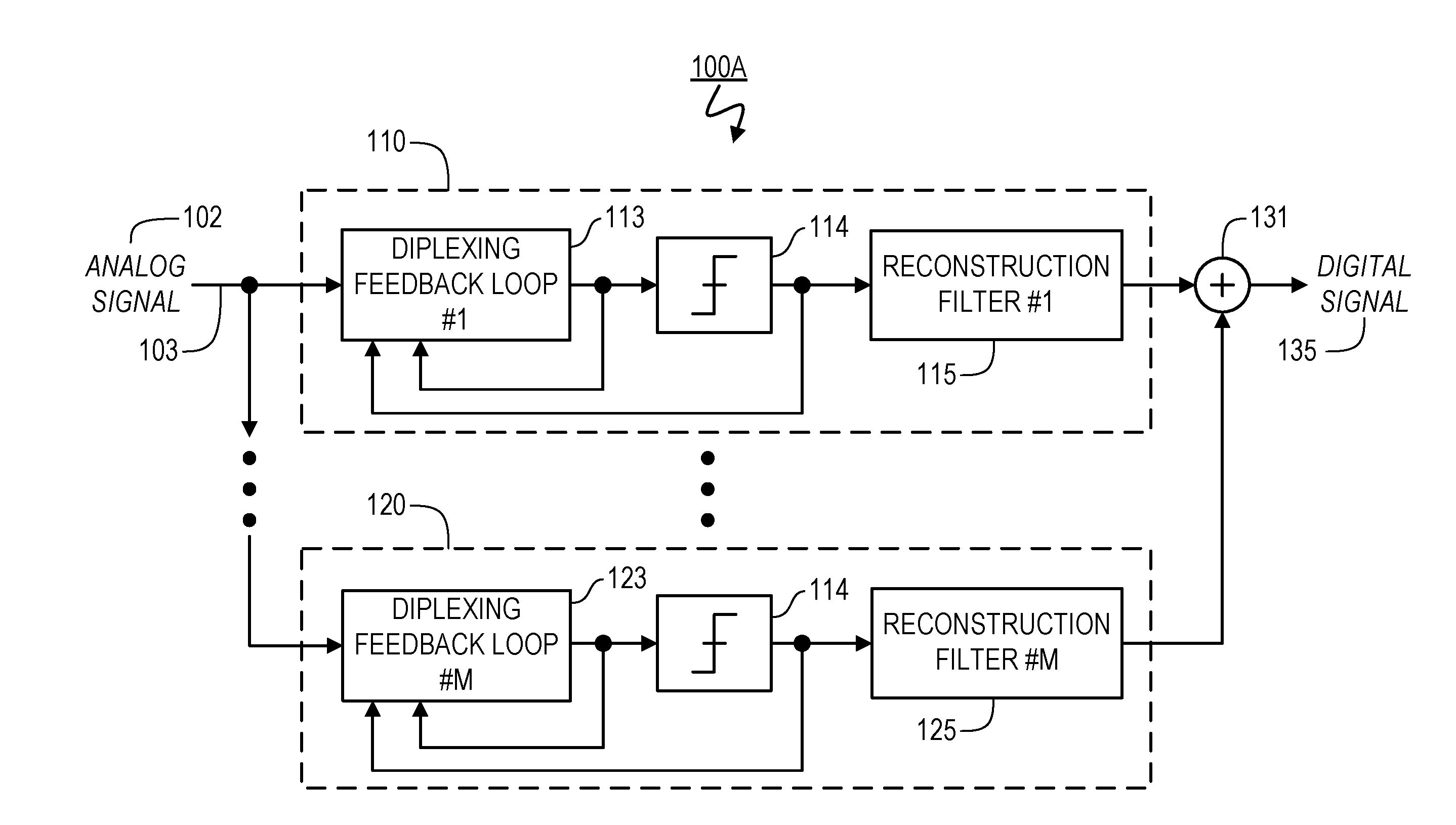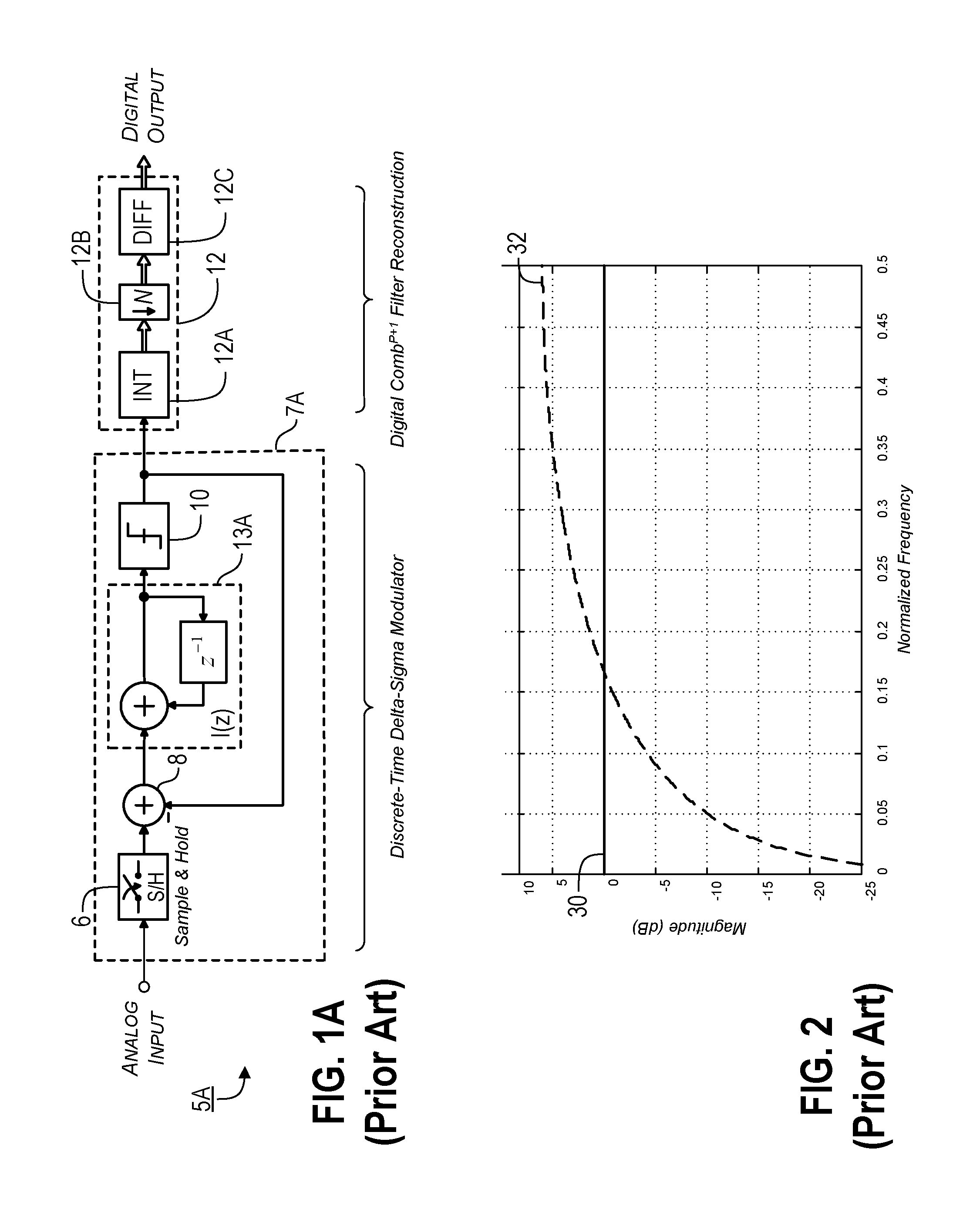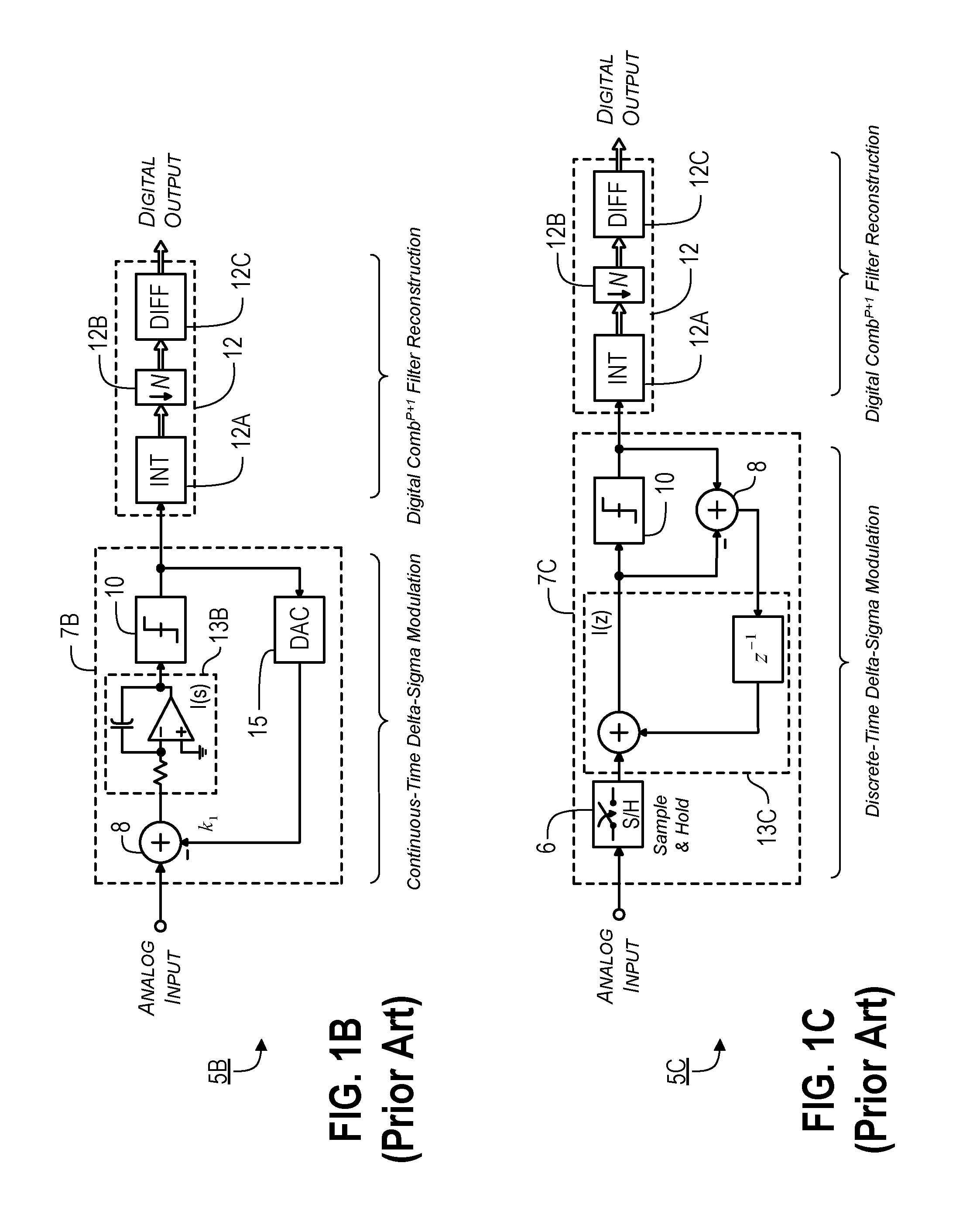Sampling/Quantization Converters
a converter and sampling/quantization technology, applied in the field of sampling/quantization converters, to achieve the effect of reducing the output of level detectors, high resolution, and better combination
- Summary
- Abstract
- Description
- Claims
- Application Information
AI Technical Summary
Benefits of technology
Problems solved by technology
Method used
Image
Examples
Embodiment Construction
)
[0054]The present disclosure is related to the disclosure set forth in the application by the present inventor, titled “Multimode Sampling / Quantization Converters”, which is being filed on the same day as the present application. The foregoing application is incorporated by reference herein as though set forth herein in full.
[0055]A preferred converter according to the present invention uses a technique that sometimes is referred to herein as Multi-Channel Bandpass Oversampling (MBO). Such a technique shares some structural similarities with conventional parallel delta-sigma (ΠΔΣ) and multiband delta-sigma (MBΔΣ) analog-to-digital converters, in that the MBO converter also consists of multiple, parallel, oversampling converters. However, a MBO converter according to the preferred embodiments of the present invention incorporates one or more of the following technological innovations to improve instantaneous bandwidth and resolution: 1) continuous-time, Diplexing Feedback Loops (DFL...
PUM
 Login to View More
Login to View More Abstract
Description
Claims
Application Information
 Login to View More
Login to View More - R&D
- Intellectual Property
- Life Sciences
- Materials
- Tech Scout
- Unparalleled Data Quality
- Higher Quality Content
- 60% Fewer Hallucinations
Browse by: Latest US Patents, China's latest patents, Technical Efficacy Thesaurus, Application Domain, Technology Topic, Popular Technical Reports.
© 2025 PatSnap. All rights reserved.Legal|Privacy policy|Modern Slavery Act Transparency Statement|Sitemap|About US| Contact US: help@patsnap.com



